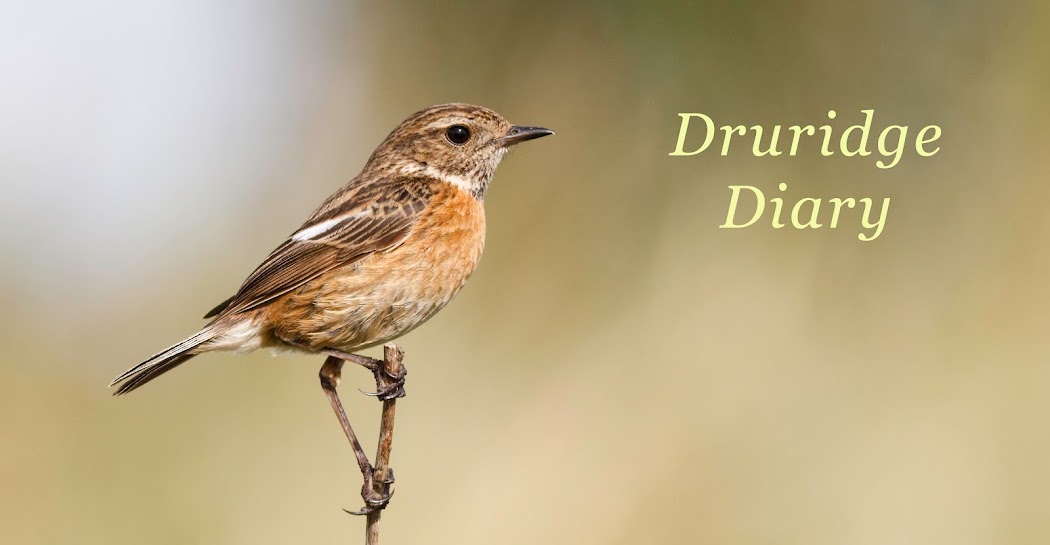Well at Druridge Pools the answer is avocet. Avocets seem to prefer bare ground, like shingle or sand, at Druridge, the pools are grassy and therefore less-favoured by avocet. Spoonbill, on the other hand, like deepish, fresh water (and seem to prefer things a bit vegetated) and are therefore more suited to Druridge.
I saw both avocet and spoonbill at Druridge tonight and I can tell you, I was more excited about the avocets that I was the spoonbills.
Both were pairs and both were fly-through's spotted from the big dune. The avocets were first through, headed south. They didn't even give the Budge fields a second-glance as they passed over.
I spotted the spoonbills either lifting off, or flying low over and picking up height, from the Budge fields. They weren't on the fields when I checked them from the hide. They flew/took off high and kept going north, straight over East Chevington and away. One of them had a red darvik ring on it's right leg (above the 'knee').
To put both into perspective, I've seen spoonbill in five of the last six years at Druridge whereas I've only seen avocet twice and not since 2008 until tonight.
Other notable sightings tonight included the drake velvet scoter back on the sea, interestingly distancing itself from the c32 common scoter and a turnstone flew south.
I also had a quick visit to the patch this morning and saw little of note and yesterday evening when I saw my first whimbrels of the year and Colin Bradshaw (the latter being much more rare on the patch).
 |
| lapwing |
 |
| There are also lots of Hares this year |
122 whimbrel
123 avocet
124 spoonbill
